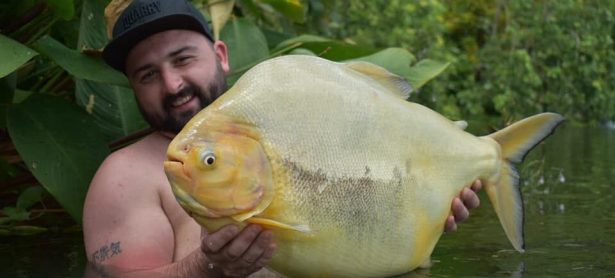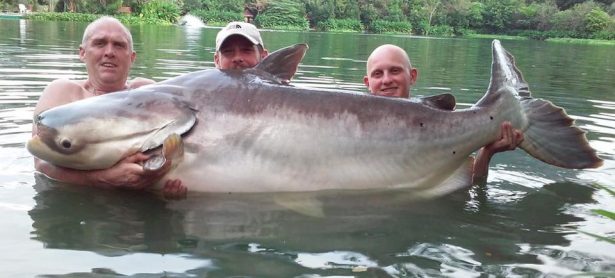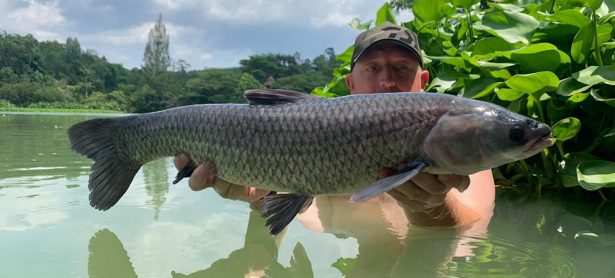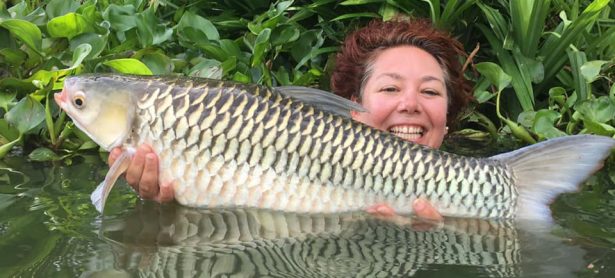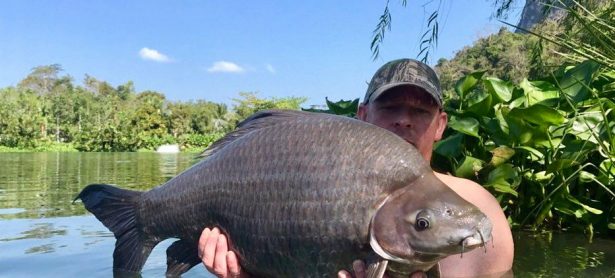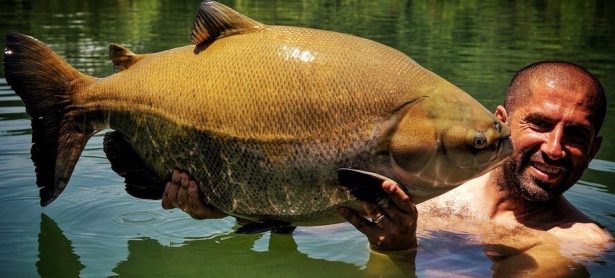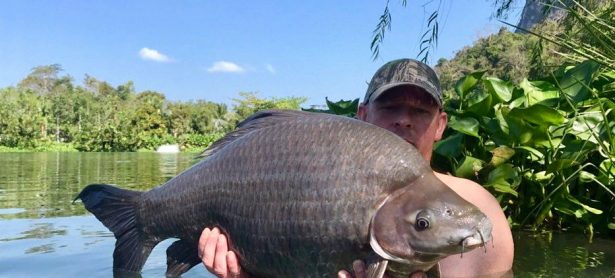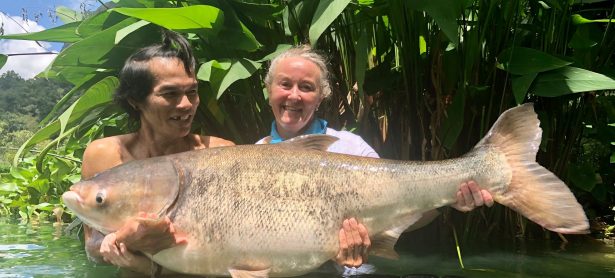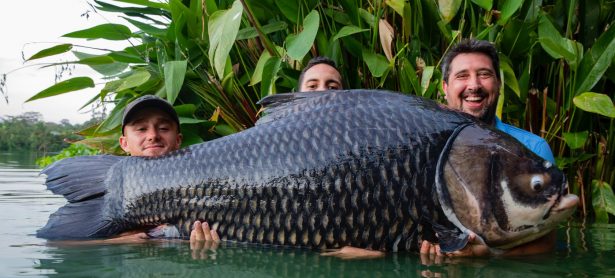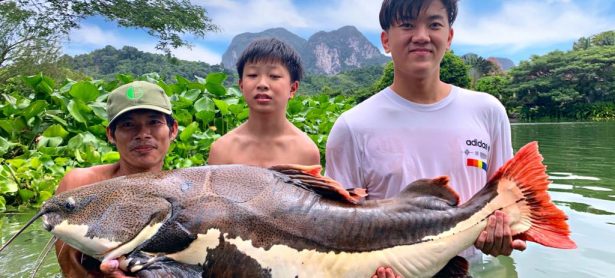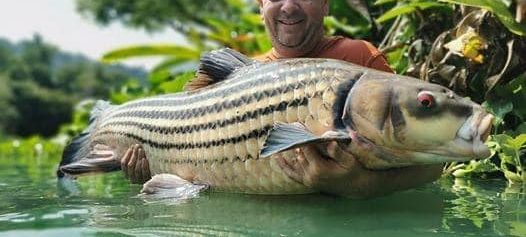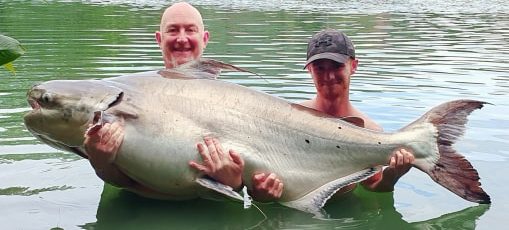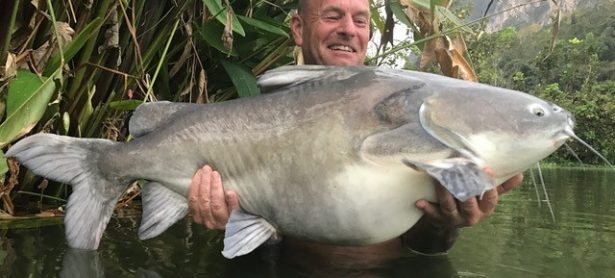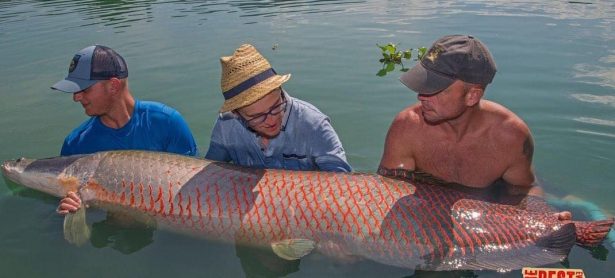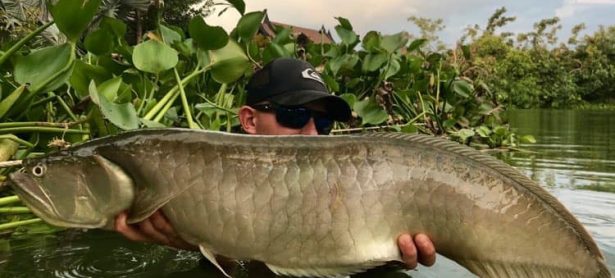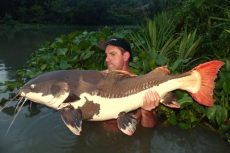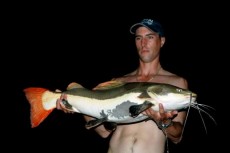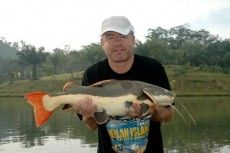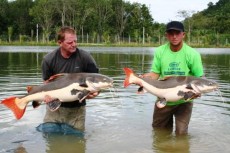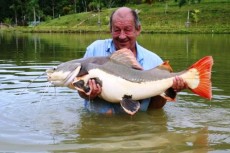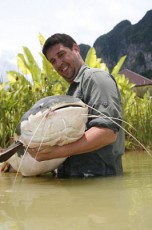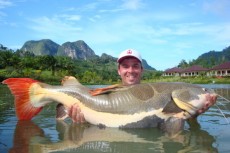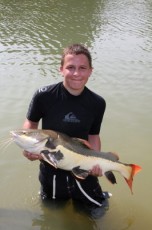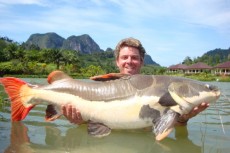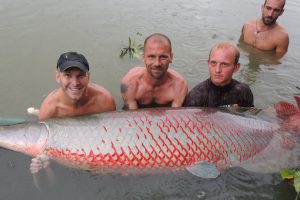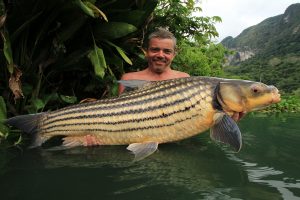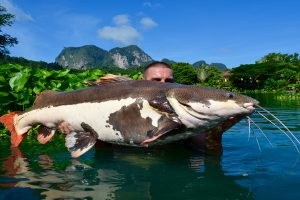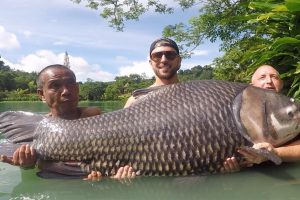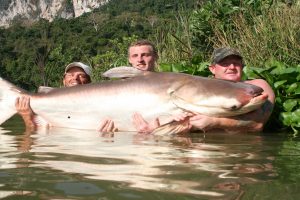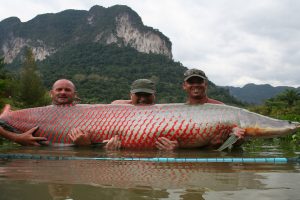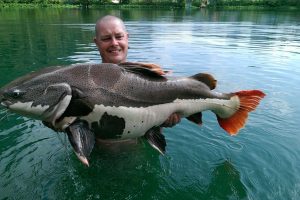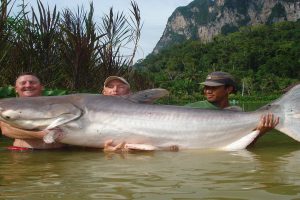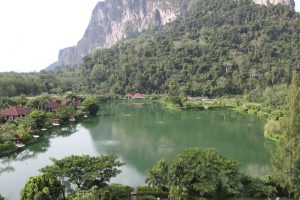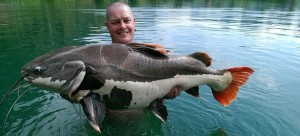 Name: Amazon red tail catfish (pirarara).
Name: Amazon red tail catfish (pirarara).
Species: Phractocephalus hemiliopterus.
Thai name: Pla Amazon dang.
Biggest known fish: 95lb
Lake rod caught Record: 86lb
Max length: 2m.
Max weight: 100kg.
IGFA record: 56kg 123lb-7oz.
Diet: Fish, pellet, boilies, squid, shrimp, scavenger of almost any food item.
To fish for our red tail catfish we recommend fish baits, pellets or boilie, fished on the bottom, and sometimes these stunning catfish will take flies. They hunt the margins for the first two hours of darkness when they will take baits within 2m of the bank. They are ferocious feeders and scavengers, and they will eat almost any bait. They go on feeding rampages when it seems the lake is full of red tails, and then they will switch off for a period of time, which has the reverse effect, and you will wonder if we have any of them at all. Red tail catfish actually shed their skins, and like snakes, when they are shedding, they also stop feeding.
Our red tail catfish were all bred in Thailand by Mr Toe who is the only man in Thailand who knows the secret of breeding these most beautiful of the catfish species. Mr Toe is very proud of his red tails and sold us his brood stock in 2007 when he changed his breeding fish to maintain their strain. He actually called his females the Miss Worlds of the red tail catfish world! Mr Toe still travels to Krabi to check on his babies, so please take care of them. We are very fortunate that Mr Toe has agreed to sell us all his brood fish in the future to maintain a good balance of up and coming stock, and we also have some year class 2007 fry from Mr. Toe growing in our stock ponds. As with all our catfish they must be injected prior to release by our staff to ensure their wellbeing. They are very hardy fish and photo friendly as they seldom struggle. However due to the hot conditions, as with all our fish please take pictures and return them ASAP. They grunt when taken out of the water and have very sharp points on their pectoral fins, which you should avoid when handling these beautiful catfish.
General facts on red tail catfish:
Red tail catfish are not indigenous to Thailand; they originate from Brazil, Rio Negro, Venezuela and Surinam. They were bought to Thailand some 30 years ago for the aquarium trade, and when they outgrew their tanks many were released into the wild, but there are no known cases of these fish breeding in the wild in Thailand. In the wild they are solitary hunters who travel the murky waters of their native rivers. It is believed that red tail catfish are unable to use visual clues to track their prey, so they follow chemical trails left behind by other fish, and they use electrical field sensors to detect there prey. These are called chemoreceptors, which abound across the catfish’s skin and act like big tongues as the catfish hunt their prey.
This also explains why red tail catfish stop feeding when they shed their skins, as the chemoreceptors shut down during this period. When they shed their skin it can often be found floating around in large translucent lumps of mucus. The male red tail catfish have a deeper red tail than their female counterparts. The red tail catfish, phractocephalus hemioliopterus, was first described by Bloch and Schneider in 1801 under the name silurus hemioliopterus.
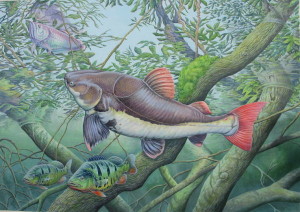 In 1829 Agassiz described a fish that he named phractocephalus bicolor. In fact they were all talking about the same fish, so in 1840 the fish became phractocephalus hemioliopterus. The red tail catfish is an egg layer which needs running water at constant temperatures between 70-75F. In the wild these fish have been known to attain 2m in length with weights in excess of 100kg, and there was an undocumented account of one fish in the Amazon in Brazil attaining a weight of some 320kg!
In 1829 Agassiz described a fish that he named phractocephalus bicolor. In fact they were all talking about the same fish, so in 1840 the fish became phractocephalus hemioliopterus. The red tail catfish is an egg layer which needs running water at constant temperatures between 70-75F. In the wild these fish have been known to attain 2m in length with weights in excess of 100kg, and there was an undocumented account of one fish in the Amazon in Brazil attaining a weight of some 320kg!



